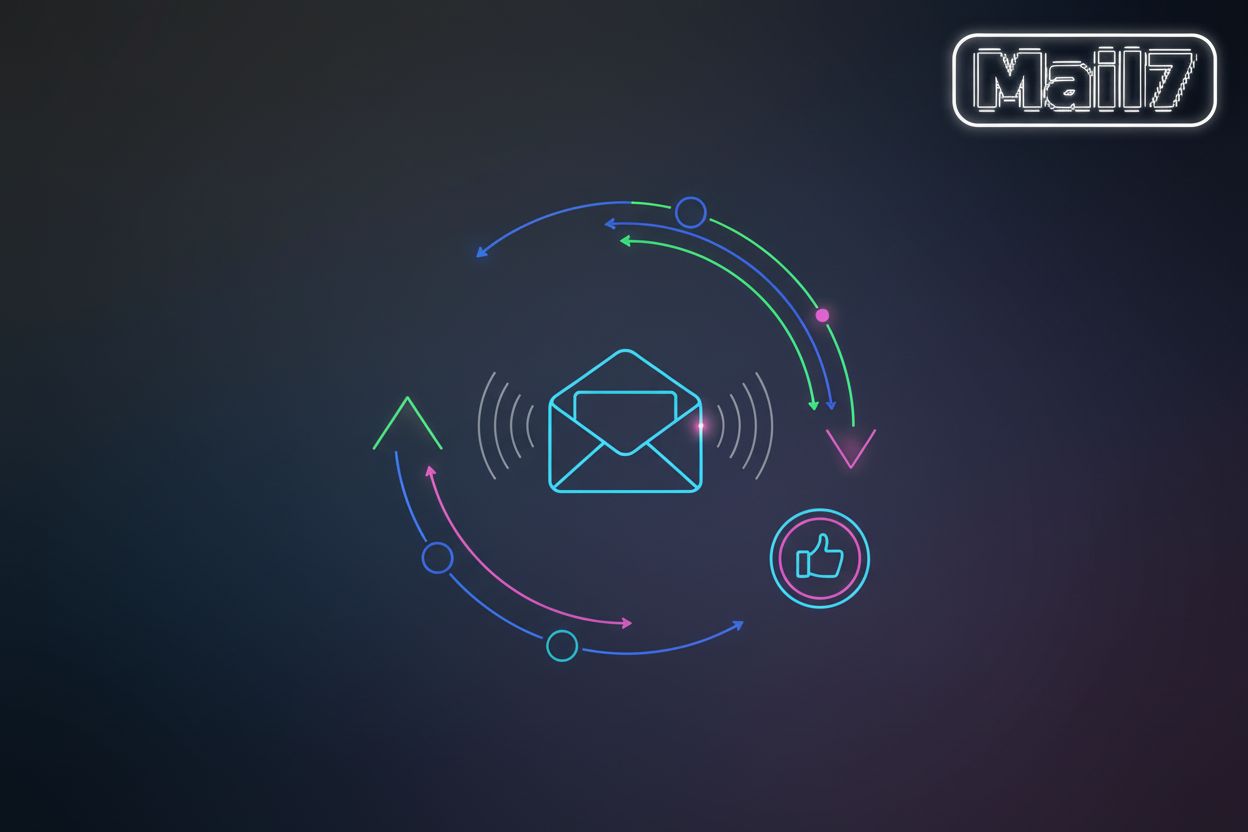Decoding Email Spoofing Techniques A Developer's Shield
TL;DR
Decoding Email Spoofing Techniques: A Developer's Shield
Understanding Email Spoofing: The Basics
Email spoofing, it's kinda like digital identity theft, right? Someone pretends to be someone else to trick you. The scary part is how easy it can be!
Email spoofing is basically forging the sender address so the email looks legit. Attackers mess with email headers, like the "From" or "Reply-To" fields, to fool you. It's not always about hacking; sometimes it's just exploiting how email systems works. The Simple Mail Transfer Protocol (smtp) doesn't verify the sender, making this possible.
Here's the main points:
- Attackers fake sender addresses to appear trustworthy, aiming to trick you into clicking links or sharing info.
- They exploit vulnerabilities in the smtp protocol because it doesn't always verify the sender's identity.
- It's different than phishing, which is more about stealing your info directly; spoofing is used to gain your trust in phishing attacks.
Think about those emails that look like they're from your bank. They ask you to urgently update your password, right? That could be spoofing. Or a fake invoice from a vendor. It happens across industries from finance to retail.
According to SiteGround, over 3 billion spoofing emails are sent every day.
Now, you're probably wondering how this actually works "under the hood", right? Let's dive into how those headers get manipulated and how they bypass filters.
Common Email Spoofing Techniques Developers Should Know
Okay, so you wanna know how the bad guys spoof emails? It's not always super complicated, but it can be really effective.
Here's a few common tricks that developers should be aware of:
Display Name Spoofing: This is pretty simple, but it works. Attackers just change the "display name" in the email client. So, it looks like it's coming from someone you know, even though the actual email address is different. Like, "ceo John Doe" [email protected]. Mobile devices are especially vulnerable, 'cause they often only show the display name due to limited screen space and design choices prioritizing quick readability.
- Developer Mitigation: When processing incoming emails, always extract and validate the actual email address from the
From:header, not just the display name. For outgoing emails, ensure your mail server is configured to correctly set theFrom:header and display name.
- Developer Mitigation: When processing incoming emails, always extract and validate the actual email address from the
Domain Spoofing: This is where they get a little more technical. They might compromise an smtp server and use it to send emails that appear to come from a legitimate domain. They mess with the "From" address in the email headers. For example, making it look like it came from @paypal.com - but it didn't.
- Developer Mitigation: Implement robust email authentication protocols like SPF, DKIM, and DMARC. For domain spoofing, your server's SPF record should explicitly list authorized sending IP addresses. DKIM signatures will fail if the
From:header domain doesn't match the signing domain. DMARC policies will then dictate how to handle these failures.
- Developer Mitigation: Implement robust email authentication protocols like SPF, DKIM, and DMARC. For domain spoofing, your server's SPF record should explicitly list authorized sending IP addresses. DKIM signatures will fail if the
Lookalike Domains: Attackers register domains that are almost identical to real ones. Like, @paypa1.com instead of @paypal.com. They're counting on you not noticing the subtle difference. This is surprisingly effective at bypassing spam filters, since it's a real domain.
- Developer Mitigation: For incoming emails, employ fuzzy matching algorithms or domain reputation services to flag domains that are suspiciously close to known legitimate ones. When constructing your own domain's DNS records, ensure you have strong DMARC policies in place to guide receivers on how to treat emails failing authentication from your domain.
These techniques are all about tricking users into trusting the email. Proofpoint explains that spoofing exploits the trust we place in familiar names and brands, making us more likely to click links or share info. It's social engineering at its finest, and it's why email spoofing remains such a persistent threat.
Imagine you get an email that looks like it's from your bank. It asks you to update your account info urgently. The display name looks right, but the email address is slightly off. That's a big red flag. Always double-check the sender's address and contact your bank directly if you're unsure.
Knowing these tricks is the first step in protecting your systems. So what can you do about it? Well, next up, we'll explore some preventative measures you can take.
Detecting Email Spoofing Techniques and Tools
Did you know that almost all cyberattacks start with an email? It's kinda scary when you think about it.
So, how do you actually spot a spoofed email before it's too late? There's a few key things to keep in mind, and some pretty handy tools out there that can help us developers out.
Analyzing email headers is like being a digital detective. You gotta look at the "Return-Path", "Received From", and "Reply-To" fields. Any weirdness or mismatching domains is a big red flag.
- Return-Path: Should match the sender's email address. If it doesn't, that's suspicious.
- Received From: Shows the email's journey, look for unusual or unexpected servers.
- Reply-to: If this is different from the sender's address, it may be a scam.
There's tools you can use like MxToolBox Header Analyzer and Google Message Header Analyzer; they help make sense of the technical stuff. They break down the headers and highlight anything that looks off.
These are like the security guards of the email world. They help verify if an email really came from where it says it did.
- SPF (Sender Policy Framework): It's like a list of approved senders for a domain. It checks if the email came from an authorized server.
- DKIM (DomainKeys Identified Mail): Adds a digital signature to the email, so the receiver knows it wasn't messed with during transit.
- DMARC (Domain-based Message Authentication, Reporting and Conformance): Tells the receiving server what to do if SPF or DKIM fails, like sending the email to spam.
The diagram below visually represents the authentication process and how DMARC policies are applied based on SPF and DKIM results:
Imagine you get an email that looks like it's from your bank, but the "Received From" field shows a server in a country you've never heard of? Sketchy! Or maybe the SPF record fails. That's a pretty clear sign something's up.
Make sure you are testing your email system, you know? Mail7 offers a Disposable Email Testing api, that allows you to create test email addresses and automate your email testing workflow. Using this can help developers test how their email configurations handle various scenarios, including how spoofed emails might be processed or how legitimate emails are authenticated, ensuring their defenses are robust.
It's important to note that while these tools are powerful, it's essential we're using them ethically. Email analysis should always respect user privacy and comply with relevant regulations.
Understanding these techniques is crucial for developers. Next up, we'll dive into proactive measures to block spoofed emails before they even reach your inbox.
Practical Steps to Protect Against Email Spoofing
Email spoofing is a serious threat, but you don't have to be a sitting duck! There are some practical steps you can take to beef up your defenses.
Okay, so first things first: email authentication protocols. These are like digital fingerprints that help verify if an email is legit.
SPF (Sender Policy Framework): Think of it as a guest list for your domain. It specifies which ip addresses are allowed to send emails on behalf of your domain. If an email comes from a server not on the list, it raises a red flag.
- Developer Implementation: To configure SPF, you'll typically add a TXT record to your domain's DNS settings. For example,
v=spf1 include:_spf.google.com ~allauthorizes Google's servers. If you're managing your own mail server, you'll list its IP addresses. Many DNS providers offer interfaces for managing these records.
- Developer Implementation: To configure SPF, you'll typically add a TXT record to your domain's DNS settings. For example,
DKIM (DomainKeys Identified Mail): This adds a digital signature to your emails. It uses encryption keys to validate the domain name. If the signature checks out, it means the email hasn't been tampered with.
- Developer Implementation: DKIM setup involves generating a public/private key pair. The public key is published in your domain's DNS as a TXT record. Your mail server then uses the private key to sign outgoing emails. Many mail server software (like Postfix or Sendmail) and email service providers have built-in DKIM support.
DMARC (Domain-based Message Authentication, Reporting and Conformance): This tells receiving servers what to do if SPF or DKIM fails. You can set a policy, like sending the email to spam or rejecting it altogether. DMARC acts as a policy layer, leveraging the results of SPF and DKIM checks to provide a comprehensive authentication framework.
- Developer Implementation: DMARC is also configured via a TXT record in your DNS. A basic DMARC record might look like
_dmarc.yourdomain.com. IN TXT "v=DMARC1; p=quarantine; rua=mailto:[email protected]". This tells receivers to quarantine emails that fail SPF or DKIM and send reports to the specified address.
- Developer Implementation: DMARC is also configured via a TXT record in your DNS. A basic DMARC record might look like
Tech isn't the whole story; people are also a key part of the puzzle. Training employees to spot spoofed emails is super important.
- Educate about social engineering: Make sure your team knows how attackers try to trick them. For example, a scammer might impersonate a ceo.
- Recognize the signs: Teach employees to spot red flags, like bad grammar, urgent requests, or mismatched email addresses.
- Verify requests: Emphasize the importance of verifying unusual requests through secure channels, like calling the sender directly.
By implementing these steps, you're making it way harder for email spoofers to succeed.
Real-World Examples and Key Takeaways
Email spoofing can be scary, but seeing how it plays out helps you protect yourself and systems. Let's look at some common scenarios and important reminders.
- ceo fraud: This is a big one. Attackers impersonate ceos or other high-ranking officials to trick employees into wiring money or divulging sensitive information. They often use display name spoofing and craft convincing emails that create a sense of urgency.
- Phishing campaigns leveraging spoofing: Many phishing attacks rely on spoofed emails to gain initial trust. An email might look like it's from a legitimate service provider (e.g., a cloud storage company or a software vendor), but the links within lead to malicious sites designed to steal credentials.
- Supply chain attacks: Attackers might spoof emails from trusted vendors or partners to infiltrate a company's network or gain access to their systems.
Say you get an email from your "bank" asking for urgent info. Check the sender address carefully. Is it exactly right? Hover over links to see where they really go, too. Analyzing email headers is key; look for discrepancies in SPF, dkim, and dmarc records. Online tools can verify if an email is legit.
It's a constant game of cat and mouse, but staying informed makes a difference.






